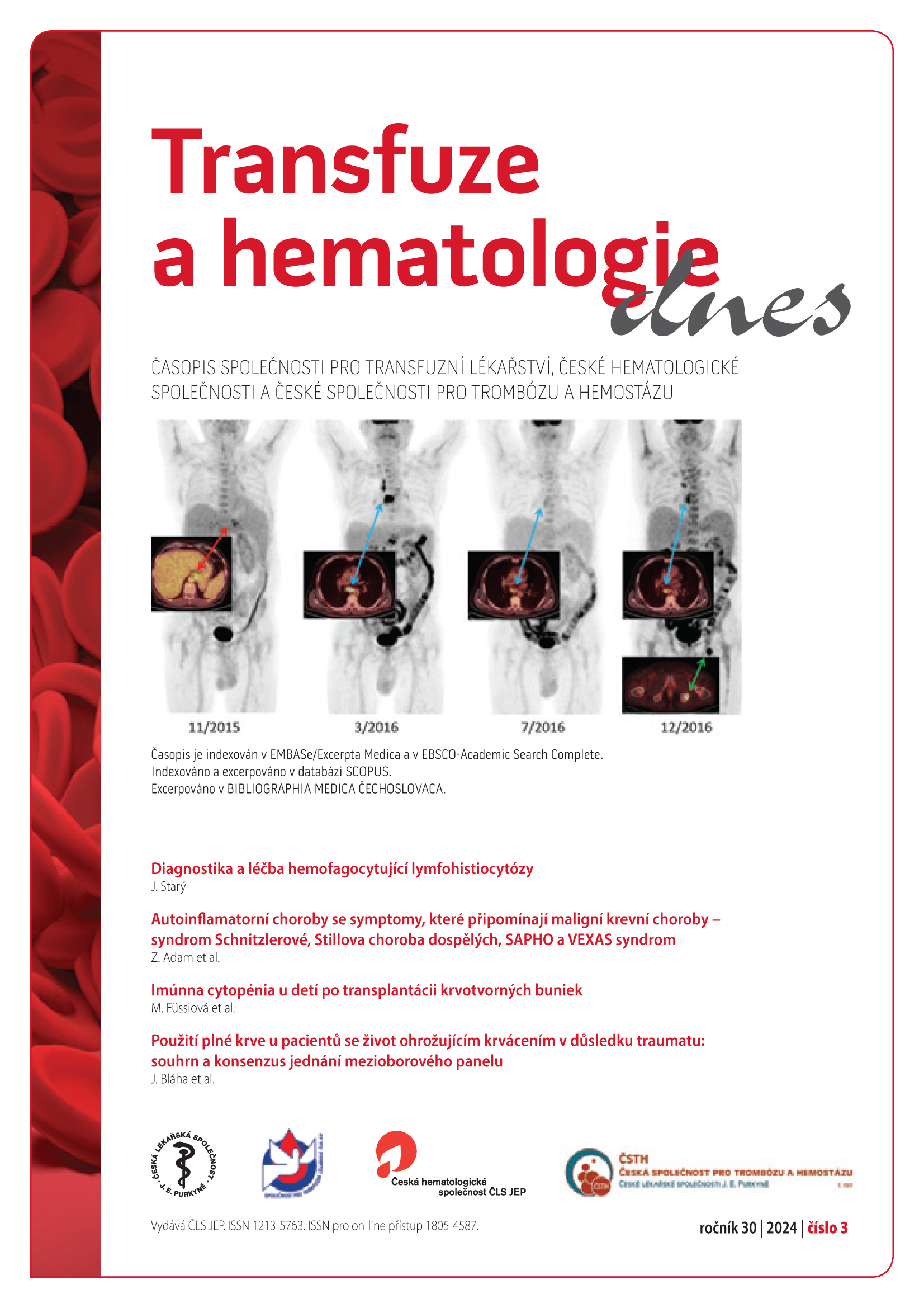Autoinflamatorní choroby se symptomy, které připomínají maligním krevní choroby: syndrom Schnitzlerové, Stillova choroba dosplých, SAPHO a VEXAS syndrom. Přehled.
Klíčová slova:
Autoinflamatorní choroby, syndrom Schnitzlerové; Adult Onset Still Disease (AOSD); VEXAS syndrom; SAPHO syndrom.Abstrakt
Autoinflammatory disorders with symptoms resembling malignant hematologic disease: Schnitzler syndrome, Adult onset Still disease, SAPHO and VEXAS syndrome.
In this paper are described four autoinflammatory disorders with first manifestation in adults. All of them have some symptoms that resemble malignant hematologic disease. These disorders represent fascinating intersections of inflammation, hematologic abnormalities, and clinical complexity. Schnitzler syndrome is characterized by a combination of monoclonal gammopathy (specifically IgM gammopathy) and autoinflammatory symptoms. Patients experience systemic inflammation affecting the skin, and bone pain. Various clinical diagnoses, including Sweet syndrome, urticaria, and others, may be assigned. Adult-onset Still’s disease (AOSD) is a rare systemic inflammatory disorder with persistent high fever is a hallmark, joint inflammation and salmon-coloured rash, fatigue, sore throat, and lymphadenopathy. VEXAS syndrome is a monogenic disease of adulthood. It results from somatic mutations in UBA1 within hematopoietic progenitor cells. Patients develop inflammatory symptoms affecting various organs, including the skin, lungs, blood vessels, and cartilage. Myeloid-driven autoinflammation and progressive bone marrow failure contribute to substantial morbidity and mortality. SAPHO syndrome is a rare condition characterized by a combination of osteitis, osteolytic bone destruction osteoarticular and dermatologic features. SAPHO syndrome induces inflammatory bone lesions (osteolytic or hyperostosis) and joint pain (synovitis). Skin manifestations includes acne and pustulosis. Only VEXAS syndrome have diagnostic UBA1 mutation, four tree other diagnostic criteria are used. The last diagnostic and therapeutic options are discussed in this review.


